RADIO IN 1947
by
Donna L. Halper
Broadcast Historian/Emerson College
I was born in 1947, although as the old joke goes, I was too young to remember. But there is a lot to remember about 1947 if you are a fan of old-time radio. 1947 was the second year of the post-war Baby Boom, and it was also the last year when radio would lack any meaningful competition: television was on the air in a few cities and was due to arrive in others very soon. But radio was still king: in fact, more than 400 new stations were going on the air, many in small towns where a local station was of great importance. According to Broadcasting magazine, by the end of the year, there would be 1,962 stations; most of them were AM, but a slowly increasing number were trying the FM band.
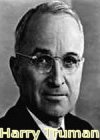
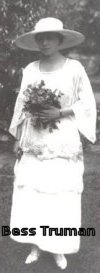 In politics, President Truman created a new cabinet-level position -the Secretary of Defense. He also changed the name of the Boulder Dam to the Hoover Dam. And what would become known as the "Marshall Plan" (foreign aid to help the European economy) was first proposed by Secretary of State George C. Marshall in a speech at Harvard University. (And his wife was named the Best Dressed Woman in Public Life that year by the Fashion Academy in New York.) Meanwhile, returning veterans from World War II were heading for college in record numbers, thanks to the G.I. Bill of Rights (which had been enacted in 1944); in 1947, more than a million former servicemen were taking college classes. And speaking of servicemen, in New York, the annual convention of the American Legion took place in late August. It featured a massive parade of 52,000 veterans (many from World War I), representing all 48 states; newspapers estimated that over 2 million spectators watched it.
In politics, President Truman created a new cabinet-level position -the Secretary of Defense. He also changed the name of the Boulder Dam to the Hoover Dam. And what would become known as the "Marshall Plan" (foreign aid to help the European economy) was first proposed by Secretary of State George C. Marshall in a speech at Harvard University. (And his wife was named the Best Dressed Woman in Public Life that year by the Fashion Academy in New York.) Meanwhile, returning veterans from World War II were heading for college in record numbers, thanks to the G.I. Bill of Rights (which had been enacted in 1944); in 1947, more than a million former servicemen were taking college classes. And speaking of servicemen, in New York, the annual convention of the American Legion took place in late August. It featured a massive parade of 52,000 veterans (many from World War I), representing all 48 states; newspapers estimated that over 2 million spectators watched it.
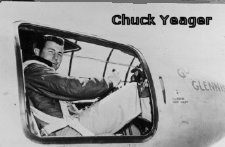 If you had $1700, Pan American Airways was beginning to offer flights around the world. But it wasn't a very good year for the airlines: despite the fact that test pilot Chuck Yeager broke the sound barrier in October, 1947 would be remembered for a number of plane crashes. In January, Grace Moore (known as the "Tennessee Nightingale", a popular star of opera, movies and radio) was killed in a plane crash in Denmark along with 21 others. In late May, 43 people were killed in a plane crash at LaGuardia Field in New York, and 53 died in a plane crash in Port Deposit Maryland. And in October, a flight from Los Angeles to New York crashed, killing in Utah, killing 52. No wonder people preferred to drive. The move to the suburbs had begun, as the Long Island NY community called Levittown opened; you could rent a two-bedroom home there for $65 or buy one for $6990, with no down payment for veterans (but unfortunately, only white families were welcome; in 1947, much of America was still segregated).
If you had $1700, Pan American Airways was beginning to offer flights around the world. But it wasn't a very good year for the airlines: despite the fact that test pilot Chuck Yeager broke the sound barrier in October, 1947 would be remembered for a number of plane crashes. In January, Grace Moore (known as the "Tennessee Nightingale", a popular star of opera, movies and radio) was killed in a plane crash in Denmark along with 21 others. In late May, 43 people were killed in a plane crash at LaGuardia Field in New York, and 53 died in a plane crash in Port Deposit Maryland. And in October, a flight from Los Angeles to New York crashed, killing in Utah, killing 52. No wonder people preferred to drive. The move to the suburbs had begun, as the Long Island NY community called Levittown opened; you could rent a two-bedroom home there for $65 or buy one for $6990, with no down payment for veterans (but unfortunately, only white families were welcome; in 1947, much of America was still segregated).
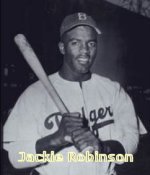 There was one place where segregation came to an end however: the world of sports. In mid April 1947, major league baseball finally had its first black player, the legendary Jackie Robinson of the National League's Brooklyn Dodgers. In early July, the American League's first black player was Larry Doby of the Cleveland Indians. Life was not easy for either man: both endured insults and threats from fans, as well as rudeness from team-mates, yet Robinson and Doby were expected not to react no matter how badly they were treated. Despite the enormous pressure and the hardships he endured that first year, Jackie Robinson hit .297 and led the league in stolen bases, as the Dodgers broke the National League attendance record. (Doby didn't play much during the 1947 season, but his career would take off the following year.)
There was one place where segregation came to an end however: the world of sports. In mid April 1947, major league baseball finally had its first black player, the legendary Jackie Robinson of the National League's Brooklyn Dodgers. In early July, the American League's first black player was Larry Doby of the Cleveland Indians. Life was not easy for either man: both endured insults and threats from fans, as well as rudeness from team-mates, yet Robinson and Doby were expected not to react no matter how badly they were treated. Despite the enormous pressure and the hardships he endured that first year, Jackie Robinson hit .297 and led the league in stolen bases, as the Dodgers broke the National League attendance record. (Doby didn't play much during the 1947 season, but his career would take off the following year.)
In 1947, you were probably listening to the games on radio, enjoying such great announcers as Red Barber, who called the games for the Dodgers or Mel Allen who called them for the Yankees. But for the first time, you could watch the World Series on television; those who owned a TV saw the Yankees defeat the Dodgers 4 games to 3. On a sad note, Babe Ruth was diagnosed with terminal throat cancer, and more than 58,000 fans jammed Yankee Stadium in late April to honour him on "Babe Ruth Day." There was one other sports event worth noting: the most famous female athlete of her day, Mildred "Babe" Didrickson Zaharias, became the first American to win the British Women's Amateur Golf Championship.
In addition to losing Grace Moore, a few other well-known people died in 1947, including industrialist and automobile manufacturer Henry Ford, at age 83; popular three-time mayor of New York Fiorello LaGuardia, at age 64; and former gangster Al Capone, at age 48-rumour had it he died of syphilis. And speaking of scandal, the death of Elizabeth Short, a young beauty queen who was murdered in Hollywood, kept the public and the media fascinated. Known as the "Black Dahlia," she was only 22 when her naked body was found. As of this writing, her killer has never been positively identified.
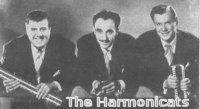 1947 was a good year for hit songs, and there were many. Among those artists who had number one songs were Francis Craig with "Near You," Vaughn Monroe with "Ballerina," the Harmonicats with "Peg of My Heart," Tex Williams with "Smoke, Smoke, Smoke that Cigarette," Ted Weems with "Heartaches," Ray Noble and Buddy Clark with "Linda," and Dinah Shore with her version of the "Anniversary Song." Other big hits in 1947 were Arthur Godfrey's novelty "Too Fat Polka," Ted Weems and Perry Como with "I Wonder Who's Kissing Her Now," and "My Adobe Hacienda" by Eddy Howard. It was also a good year for some new vocal sensations-Vito Farinola changed his name to Vic Damone and sang on the radio for the first time in March, on WHN in New York. It would be the beginning of a long and distinguished career. And another Italian vocalist, Frank LoVecchio, better known as Frankie Laine, had his first million selling hit, "That's My Desire."
1947 was a good year for hit songs, and there were many. Among those artists who had number one songs were Francis Craig with "Near You," Vaughn Monroe with "Ballerina," the Harmonicats with "Peg of My Heart," Tex Williams with "Smoke, Smoke, Smoke that Cigarette," Ted Weems with "Heartaches," Ray Noble and Buddy Clark with "Linda," and Dinah Shore with her version of the "Anniversary Song." Other big hits in 1947 were Arthur Godfrey's novelty "Too Fat Polka," Ted Weems and Perry Como with "I Wonder Who's Kissing Her Now," and "My Adobe Hacienda" by Eddy Howard. It was also a good year for some new vocal sensations-Vito Farinola changed his name to Vic Damone and sang on the radio for the first time in March, on WHN in New York. It would be the beginning of a long and distinguished career. And another Italian vocalist, Frank LoVecchio, better known as Frankie Laine, had his first million selling hit, "That's My Desire."
If you liked theatre, this was the first year for the Tony Awards (named for director Antoinette Perry). Among the winners were Jose Ferrer ("Cyrano de Bergerac"); Ingrid Bergman ("Joan of Lorraine) and Helen Hayes ("Happy Birthday.") And on Broadway, 1947 started with the hit musical "Finian's Rainbow" (featuring the song "How are Things in Glocca Morra"). Another popular musical, "Brigadoon," written by Lerner and Loewe, opened in mid March at the Ziegfield Theatre-tickets were $1.40 to $4.60 during the week.
Bert Lahr was making audiences laugh at the Belasco, where he starred in "Burlesque" for much of the year And Tennessee Williams' drama, "A Streetcar Named Desire," opened in early December; Elia Kazan was the director. At the movies, the Academy Award for Best Picture of 1947 would go to "Gentlemen's Agreement." (The book, about anti-Semitism, was a best-seller for its author, Laura Z. Hobson. And speaking of books, James Michener did well with "Tales of the South Pacific." And this was the year when "The Diary of Anne Frank" was first published.)
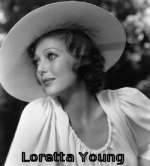 Back to movies, the 1947 Oscar for Best Actor went to Ronald Coleman ("A Double Life") and Loretta Young was best actress ("The Farmer's Daughter.") And other popular movies in 1947 included "The Ghost and Mrs. Muir" and "The Secret Life of Walter Mitty." (The star, comedian Danny Kaye, had his own radio show on CBS beginning in 1945.)
Back to movies, the 1947 Oscar for Best Actor went to Ronald Coleman ("A Double Life") and Loretta Young was best actress ("The Farmer's Daughter.") And other popular movies in 1947 included "The Ghost and Mrs. Muir" and "The Secret Life of Walter Mitty." (The star, comedian Danny Kaye, had his own radio show on CBS beginning in 1945.)
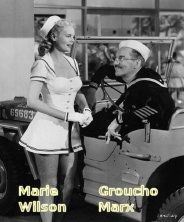 In a harbinger of things to come, "Meet the Press", which had begun as a radio show, made the move to television in November. Many other shows would begin doing the same. But on the other hand, a few new radio shows made their debut in 1947, most notable among them Groucho Marx with "You Bet Your Life," which debuted in October. "My Friend Irma," starring Marie Wilson, first aired in April; so did the crime drama "The Big Story." And the "Adventures of Philip Marlowe" began as a summer replacement in 1947 on NBC, with Van Heflin. (It would change networks to CBS and give the starring role to Gerald Mohr the following year.) "The Ford Theater" attempted to broadcast famous plays, using radio performers instead of stage actors and actresses. It debuted in October, promising a wide range of theatrical works from comedies to musicals to serious dramas. Critics liked it, but the public never warmed up to the show.
In a harbinger of things to come, "Meet the Press", which had begun as a radio show, made the move to television in November. Many other shows would begin doing the same. But on the other hand, a few new radio shows made their debut in 1947, most notable among them Groucho Marx with "You Bet Your Life," which debuted in October. "My Friend Irma," starring Marie Wilson, first aired in April; so did the crime drama "The Big Story." And the "Adventures of Philip Marlowe" began as a summer replacement in 1947 on NBC, with Van Heflin. (It would change networks to CBS and give the starring role to Gerald Mohr the following year.) "The Ford Theater" attempted to broadcast famous plays, using radio performers instead of stage actors and actresses. It debuted in October, promising a wide range of theatrical works from comedies to musicals to serious dramas. Critics liked it, but the public never warmed up to the show.
Phil Silvers had a brief series in 1947, playing a reporter on ABC's "The Phil Silvers Show," but it only lasted for 5 months. Much more successful was "Lassie," which first went on the air in June; it became a hit with the juvenile audience, although kids probably didn't realise that sometimes the barking or growling was done by a real dog and sometimes by a human (Earl Keen) who specialised in doing imitations of animals. But TV was where a couple of former radio stars could now be seen doing children's shows: one was Boston's legendary Big Brother Bob Emery, whose career had begun on radio in 1921; now, he was in New York with the "Small Fry Club" (formerly known as the "Big Brother Club") also, Bob Smith became "Buffalo Bob" and made his TV debut with the "Howdy Doody" show. Meanwhile, on CBS News, an Edward R. Murrow protegé, Eric Sevareid, began doing regular daily newscasts in February.
 In 1947, you could buy a copy of Time magazine for 20 cents. A copy of Coronet was 25 cents. The gentleman who needed a shave could buy ten Gillette Blue Blades for forty-nine cents. Boys who needed a sturdy pair of shoes could always buy a pair of "Tuff-Guys," selling for $7.45. For the young woman who wanted some nice figure skates, Abercrombie and Fitch was selling the ladies' model (made in Canada of the finest materials) for $21. A wool flannel skirt from Best & Co. could be purchased for $7.95 and the matching pure wool sweater was $10.95. And if you had $1900, you could get a new Nash sedan to drive; a Cadillac sedan would cost you $4750. And if you wanted a nice black and white TV, that cost about $274, and an increasing number of people were buying them, even though nationally, there were fewer than 20 stations on the air.
In 1947, you could buy a copy of Time magazine for 20 cents. A copy of Coronet was 25 cents. The gentleman who needed a shave could buy ten Gillette Blue Blades for forty-nine cents. Boys who needed a sturdy pair of shoes could always buy a pair of "Tuff-Guys," selling for $7.45. For the young woman who wanted some nice figure skates, Abercrombie and Fitch was selling the ladies' model (made in Canada of the finest materials) for $21. A wool flannel skirt from Best & Co. could be purchased for $7.95 and the matching pure wool sweater was $10.95. And if you had $1900, you could get a new Nash sedan to drive; a Cadillac sedan would cost you $4750. And if you wanted a nice black and white TV, that cost about $274, and an increasing number of people were buying them, even though nationally, there were fewer than 20 stations on the air.
It was a time when social trends had undergone swift and dramatic changes. Rosie the Riveter from World War II was no longer the ideal for women. Now, magazine articles and advertisements stressed that a woman's true happiness could only be found in her home and her family. Psychology texts stated that a woman who wanted to work was trying to be a man: a 1947 best-seller called "Modern Woman: The Lost Sex" taught that a normal woman should be passive, dependent, and willing to endure sex with her husband so that she could fulfill her destiny by becoming pregnant (no, I am not exaggerating; it really did say that). One of the authors, Freudian psychiatrist Dr. Marynia Farnham had even appeared on "The March of Time" to persuade those women who wanted to keep the jobs they had during the war that their mental health would be in jeopardy unless they stopped working. (For more about changing gender roles in the late 40s, you can read the chapter I wrote in "Invisible Stars: A Social History of Women in American Broadcasting.")
The political climate was also about to become much more conservative: the Cold War had begun, and commentators like Walter Winchell were sounding the alarm about the threat of Communism. Even veteran news reporter H.V. Kaltenborn spoke about the "Communist menace," while certain members of congress and even the president began calling for loyalty oaths, and rumours spread that the media had been infilitrated by Communist sympathisers. What would later become known as McCarthyism was taking hold, and many innocent people would soon be accused of being un-American. As if this wasn't disconcerting enough, there were a growing number of reports of strange unidentified objects in the sky- in June, Kenneth Arnold of Boise Idaho claimed he saw nine of them, travelling at a speed of 1,200 miles an hour; he was not the only one that year to insist that 'flying saucers' were real.
Amid the uncertainties of the Cold War era, people relied on radio to keep their mind off of world events. But since the end of World War II, something was changing at the majority of stations-- radio was moving away from live music and studio orchestras and towards recorded music and disc jockeys. One survey in Broadcasting magazine found that by the fall of 1947, 9 out of 10 stations had some disc jockey programs on their station. And another thing was about to change in radio, although the full impact would not be apparent for several more years. It was in December 1947 when three physicists at Bell Labs (John Bardeen, William Brattain, and William Shockley) invented a replacement for the vacuum tube-the transistor. This new technology wouldn't become affordable till the early 50s, paving the way for the production of smaller portable radios.
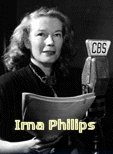 As Americans contemplated a world where Communists might take over and UFOs were watching everyone, they undoubtedly were grateful for their favourite radio stars. Many of the soap operas were still on the air, and a survey in Variety showed that 8 out of 10 women chose a soap opera as her favourite show. This immediately got the critics upset about the lack of intellectual stimulation in soap operas, prompting Irna Phillips, who had been writing and creating soap operas since 1930, to defend them in a Variety opinion piece. As popular as soap operas (or 'daytime dramas,' as they were sometimes called) were, they got some competition from fans of the big money quiz shows-one listener, a housewife from Lockhaven PA, won $17,500 in cash and prizes on "Truth or Consequences" with Ralph Edwards; it was perhaps the largest prize total of any quiz show of that era.
As Americans contemplated a world where Communists might take over and UFOs were watching everyone, they undoubtedly were grateful for their favourite radio stars. Many of the soap operas were still on the air, and a survey in Variety showed that 8 out of 10 women chose a soap opera as her favourite show. This immediately got the critics upset about the lack of intellectual stimulation in soap operas, prompting Irna Phillips, who had been writing and creating soap operas since 1930, to defend them in a Variety opinion piece. As popular as soap operas (or 'daytime dramas,' as they were sometimes called) were, they got some competition from fans of the big money quiz shows-one listener, a housewife from Lockhaven PA, won $17,500 in cash and prizes on "Truth or Consequences" with Ralph Edwards; it was perhaps the largest prize total of any quiz show of that era.
Meanwhile, Richard Nixon was elected to his first term in the House of Representatives, and Joe McCarthy was beginning his first term in the Senate. The President's Committee on Civil Rights issued a report in late October condemning segregation and demanding that the armed forces integrate; President Truman began taking steps to make it happen. Radio was cautiously raising the subject of racism, and a few local stations in the north and the midwest offered thought-provoking public affairs programs on the subject. There still were no all-black (or Negro, the term still in common use) radio stations, but in Chicago, which had several black announcers, WJJD was about to offer an all-black soap opera, "Here Comes Tomorrow"-unfortunately, it was delayed because it couldn't find a sponsor right away, but it did get on the air eventually. There were even more changes to come, but most Americans weren't asking a lot of questions. They were busy buying a new car or moving to the suburbs or having another kid. It was 1947, and the era of sitting in front of the TV was about to begin.

 In politics, President Truman created a new cabinet-level position -the Secretary of Defense. He also changed the name of the Boulder Dam to the Hoover Dam. And what would become known as the "Marshall Plan" (foreign aid to help the European economy) was first proposed by Secretary of State George C. Marshall in a speech at Harvard University. (And his wife was named the Best Dressed Woman in Public Life that year by the Fashion Academy in New York.) Meanwhile, returning veterans from World War II were heading for college in record numbers, thanks to the G.I. Bill of Rights (which had been enacted in 1944); in 1947, more than a million former servicemen were taking college classes. And speaking of servicemen, in New York, the annual convention of the American Legion took place in late August. It featured a massive parade of 52,000 veterans (many from World War I), representing all 48 states; newspapers estimated that over 2 million spectators watched it.
In politics, President Truman created a new cabinet-level position -the Secretary of Defense. He also changed the name of the Boulder Dam to the Hoover Dam. And what would become known as the "Marshall Plan" (foreign aid to help the European economy) was first proposed by Secretary of State George C. Marshall in a speech at Harvard University. (And his wife was named the Best Dressed Woman in Public Life that year by the Fashion Academy in New York.) Meanwhile, returning veterans from World War II were heading for college in record numbers, thanks to the G.I. Bill of Rights (which had been enacted in 1944); in 1947, more than a million former servicemen were taking college classes. And speaking of servicemen, in New York, the annual convention of the American Legion took place in late August. It featured a massive parade of 52,000 veterans (many from World War I), representing all 48 states; newspapers estimated that over 2 million spectators watched it.
 If you had $1700, Pan American Airways was beginning to offer flights around the world. But it wasn't a very good year for the airlines: despite the fact that test pilot Chuck Yeager broke the sound barrier in October, 1947 would be remembered for a number of plane crashes. In January, Grace Moore (known as the "Tennessee Nightingale", a popular star of opera, movies and radio) was killed in a plane crash in Denmark along with 21 others. In late May, 43 people were killed in a plane crash at LaGuardia Field in New York, and 53 died in a plane crash in Port Deposit Maryland. And in October, a flight from Los Angeles to New York crashed, killing in Utah, killing 52. No wonder people preferred to drive. The move to the suburbs had begun, as the Long Island NY community called Levittown opened; you could rent a two-bedroom home there for $65 or buy one for $6990, with no down payment for veterans (but unfortunately, only white families were welcome; in 1947, much of America was still segregated).
If you had $1700, Pan American Airways was beginning to offer flights around the world. But it wasn't a very good year for the airlines: despite the fact that test pilot Chuck Yeager broke the sound barrier in October, 1947 would be remembered for a number of plane crashes. In January, Grace Moore (known as the "Tennessee Nightingale", a popular star of opera, movies and radio) was killed in a plane crash in Denmark along with 21 others. In late May, 43 people were killed in a plane crash at LaGuardia Field in New York, and 53 died in a plane crash in Port Deposit Maryland. And in October, a flight from Los Angeles to New York crashed, killing in Utah, killing 52. No wonder people preferred to drive. The move to the suburbs had begun, as the Long Island NY community called Levittown opened; you could rent a two-bedroom home there for $65 or buy one for $6990, with no down payment for veterans (but unfortunately, only white families were welcome; in 1947, much of America was still segregated).
 There was one place where segregation came to an end however: the world of sports. In mid April 1947, major league baseball finally had its first black player, the legendary Jackie Robinson of the National League's Brooklyn Dodgers. In early July, the American League's first black player was Larry Doby of the Cleveland Indians. Life was not easy for either man: both endured insults and threats from fans, as well as rudeness from team-mates, yet Robinson and Doby were expected not to react no matter how badly they were treated. Despite the enormous pressure and the hardships he endured that first year, Jackie Robinson hit .297 and led the league in stolen bases, as the Dodgers broke the National League attendance record. (Doby didn't play much during the 1947 season, but his career would take off the following year.)
There was one place where segregation came to an end however: the world of sports. In mid April 1947, major league baseball finally had its first black player, the legendary Jackie Robinson of the National League's Brooklyn Dodgers. In early July, the American League's first black player was Larry Doby of the Cleveland Indians. Life was not easy for either man: both endured insults and threats from fans, as well as rudeness from team-mates, yet Robinson and Doby were expected not to react no matter how badly they were treated. Despite the enormous pressure and the hardships he endured that first year, Jackie Robinson hit .297 and led the league in stolen bases, as the Dodgers broke the National League attendance record. (Doby didn't play much during the 1947 season, but his career would take off the following year.)
 1947 was a good year for hit songs, and there were many. Among those artists who had number one songs were Francis Craig with "Near You," Vaughn Monroe with "Ballerina," the Harmonicats with "Peg of My Heart," Tex Williams with "Smoke, Smoke, Smoke that Cigarette," Ted Weems with "Heartaches," Ray Noble and Buddy Clark with "Linda," and Dinah Shore with her version of the "Anniversary Song." Other big hits in 1947 were Arthur Godfrey's novelty "Too Fat Polka," Ted Weems and Perry Como with "I Wonder Who's Kissing Her Now," and "My Adobe Hacienda" by Eddy Howard. It was also a good year for some new vocal sensations-Vito Farinola changed his name to Vic Damone and sang on the radio for the first time in March, on WHN in New York. It would be the beginning of a long and distinguished career. And another Italian vocalist, Frank LoVecchio, better known as Frankie Laine, had his first million selling hit, "That's My Desire."
1947 was a good year for hit songs, and there were many. Among those artists who had number one songs were Francis Craig with "Near You," Vaughn Monroe with "Ballerina," the Harmonicats with "Peg of My Heart," Tex Williams with "Smoke, Smoke, Smoke that Cigarette," Ted Weems with "Heartaches," Ray Noble and Buddy Clark with "Linda," and Dinah Shore with her version of the "Anniversary Song." Other big hits in 1947 were Arthur Godfrey's novelty "Too Fat Polka," Ted Weems and Perry Como with "I Wonder Who's Kissing Her Now," and "My Adobe Hacienda" by Eddy Howard. It was also a good year for some new vocal sensations-Vito Farinola changed his name to Vic Damone and sang on the radio for the first time in March, on WHN in New York. It would be the beginning of a long and distinguished career. And another Italian vocalist, Frank LoVecchio, better known as Frankie Laine, had his first million selling hit, "That's My Desire."
 Back to movies, the 1947 Oscar for Best Actor went to Ronald Coleman ("A Double Life") and Loretta Young was best actress ("The Farmer's Daughter.") And other popular movies in 1947 included "The Ghost and Mrs. Muir" and "The Secret Life of Walter Mitty." (The star, comedian Danny Kaye, had his own radio show on CBS beginning in 1945.)
Back to movies, the 1947 Oscar for Best Actor went to Ronald Coleman ("A Double Life") and Loretta Young was best actress ("The Farmer's Daughter.") And other popular movies in 1947 included "The Ghost and Mrs. Muir" and "The Secret Life of Walter Mitty." (The star, comedian Danny Kaye, had his own radio show on CBS beginning in 1945.)
 In a harbinger of things to come, "Meet the Press", which had begun as a radio show, made the move to television in November. Many other shows would begin doing the same. But on the other hand, a few new radio shows made their debut in 1947, most notable among them Groucho Marx with "You Bet Your Life," which debuted in October. "My Friend Irma," starring Marie Wilson, first aired in April; so did the crime drama "The Big Story." And the "Adventures of Philip Marlowe" began as a summer replacement in 1947 on NBC, with Van Heflin. (It would change networks to CBS and give the starring role to Gerald Mohr the following year.) "The Ford Theater" attempted to broadcast famous plays, using radio performers instead of stage actors and actresses. It debuted in October, promising a wide range of theatrical works from comedies to musicals to serious dramas. Critics liked it, but the public never warmed up to the show.
In a harbinger of things to come, "Meet the Press", which had begun as a radio show, made the move to television in November. Many other shows would begin doing the same. But on the other hand, a few new radio shows made their debut in 1947, most notable among them Groucho Marx with "You Bet Your Life," which debuted in October. "My Friend Irma," starring Marie Wilson, first aired in April; so did the crime drama "The Big Story." And the "Adventures of Philip Marlowe" began as a summer replacement in 1947 on NBC, with Van Heflin. (It would change networks to CBS and give the starring role to Gerald Mohr the following year.) "The Ford Theater" attempted to broadcast famous plays, using radio performers instead of stage actors and actresses. It debuted in October, promising a wide range of theatrical works from comedies to musicals to serious dramas. Critics liked it, but the public never warmed up to the show.
 In 1947, you could buy a copy of Time magazine for 20 cents. A copy of Coronet was 25 cents. The gentleman who needed a shave could buy ten Gillette Blue Blades for forty-nine cents. Boys who needed a sturdy pair of shoes could always buy a pair of "Tuff-Guys," selling for $7.45. For the young woman who wanted some nice figure skates, Abercrombie and Fitch was selling the ladies' model (made in Canada of the finest materials) for $21. A wool flannel skirt from Best & Co. could be purchased for $7.95 and the matching pure wool sweater was $10.95. And if you had $1900, you could get a new Nash sedan to drive; a Cadillac sedan would cost you $4750. And if you wanted a nice black and white TV, that cost about $274, and an increasing number of people were buying them, even though nationally, there were fewer than 20 stations on the air.
In 1947, you could buy a copy of Time magazine for 20 cents. A copy of Coronet was 25 cents. The gentleman who needed a shave could buy ten Gillette Blue Blades for forty-nine cents. Boys who needed a sturdy pair of shoes could always buy a pair of "Tuff-Guys," selling for $7.45. For the young woman who wanted some nice figure skates, Abercrombie and Fitch was selling the ladies' model (made in Canada of the finest materials) for $21. A wool flannel skirt from Best & Co. could be purchased for $7.95 and the matching pure wool sweater was $10.95. And if you had $1900, you could get a new Nash sedan to drive; a Cadillac sedan would cost you $4750. And if you wanted a nice black and white TV, that cost about $274, and an increasing number of people were buying them, even though nationally, there were fewer than 20 stations on the air.
 As Americans contemplated a world where Communists might take over and UFOs were watching everyone, they undoubtedly were grateful for their favourite radio stars. Many of the soap operas were still on the air, and a survey in Variety showed that 8 out of 10 women chose a soap opera as her favourite show. This immediately got the critics upset about the lack of intellectual stimulation in soap operas, prompting Irna Phillips, who had been writing and creating soap operas since 1930, to defend them in a Variety opinion piece. As popular as soap operas (or 'daytime dramas,' as they were sometimes called) were, they got some competition from fans of the big money quiz shows-one listener, a housewife from Lockhaven PA, won $17,500 in cash and prizes on "Truth or Consequences" with Ralph Edwards; it was perhaps the largest prize total of any quiz show of that era.
As Americans contemplated a world where Communists might take over and UFOs were watching everyone, they undoubtedly were grateful for their favourite radio stars. Many of the soap operas were still on the air, and a survey in Variety showed that 8 out of 10 women chose a soap opera as her favourite show. This immediately got the critics upset about the lack of intellectual stimulation in soap operas, prompting Irna Phillips, who had been writing and creating soap operas since 1930, to defend them in a Variety opinion piece. As popular as soap operas (or 'daytime dramas,' as they were sometimes called) were, they got some competition from fans of the big money quiz shows-one listener, a housewife from Lockhaven PA, won $17,500 in cash and prizes on "Truth or Consequences" with Ralph Edwards; it was perhaps the largest prize total of any quiz show of that era.